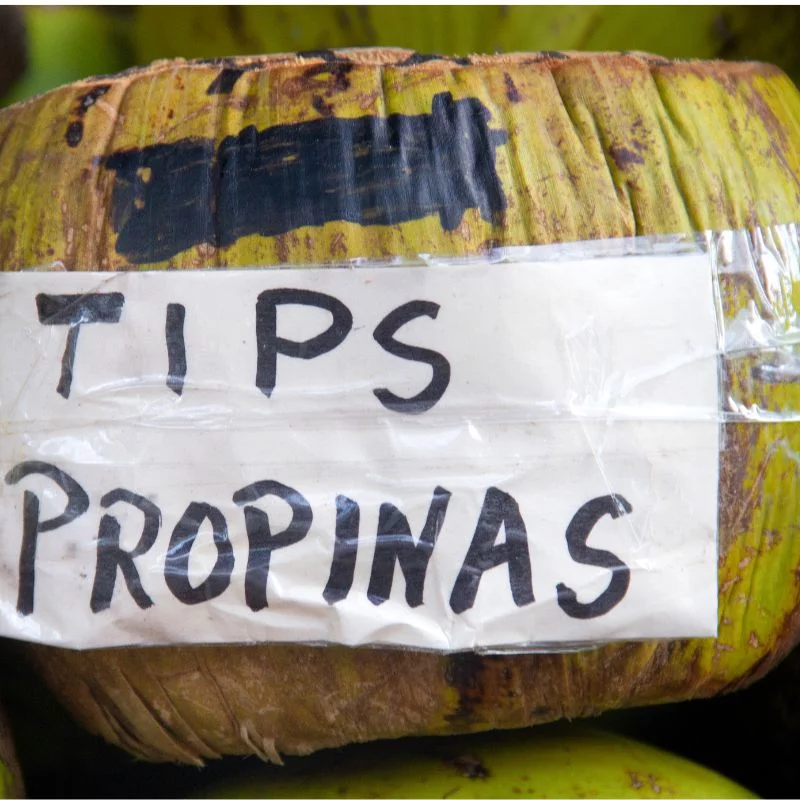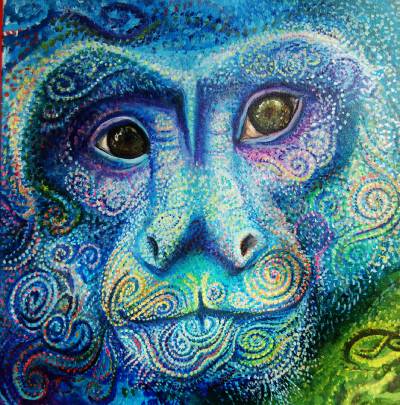Planning the perfect Costa Rica family vacation? Look no further! This comprehensive Costa Rica family itinerary is designed for travelers who want to explore the country’s natural wonders, thrilling adventures, and relaxing beaches—all while maintaining flexibility and independence.
Continue readingTipping in Costa Rica
When it comes to tipping in Costa Rica, it’s crucial to understand the tipping culture to know what to anticipate and how much cash to carry.

Tipping in Costa Rica has slowly become part of our touristic culture, with all the influence we get from the U.S. But it is important to note that by law in Costa Rica, there is a 10% service charge included in all our bills. However, Costa Ricans usually smile and please people as a part of who we really are.
However, since 1990, when tourism burst as the primary industry and it generalized all over the country, tipping has become part of our day-to-day lives.
Little by little, people have been developing the habit, but it is essential to realize that you are already paying ten percent of your bill, and legally, the owners of the businesses have to give the cash to the whole team, and they will share it.
Nevertheless, although entirely voluntary, gratuities in Costa Rica, especially in the tourism industry, are well received and appreciated.
The tipping etiquette in Costa Rica for visitors is that it is never necessary but always appreciated. Especially considering Costa Rica’s minimum salary is low, the tourism business has been closed due to the epidemic.
Tipping in Costa Rica: Do You Use Dollars or Colones?
You can tip in Costa Rica’s colones or US dollars. Locals routinely take US dollars, preferably as the currency rate changes almost every day, and for many of them, tips are a usual source of income.
You will find a tips box in some tours and areas, and these are gratuities shared among the whole team.
Other currencies, such as Canadian Dollars, Euros, or British Pounds, will be extremely hard to change in our banking system.
Restaurant Tipping Culture in Costa Rica
The service tax, also referred to as a gratuity or tip charge, is something that restaurants in Costa Rica are required to include in their menu prices by law. The sales tax is 13%, while the service fee (tip) is 10%.

However, some restaurants do not include taxes in their menu pricing and will put “taxes not included” or “impuestos no incluidos” anywhere on the menu. If neither tax is included, expect to pay an additional 23 percent on top of the menu price. If just service tax is not included, it is an additional 10%.
Restaurants will indicate this somewhere on the menu if all taxes and tips are included.
Some establishments in more touristy places may give you an extra receipt with a tip section. You don’t have to tip more if you don’t want to, since you’ll pay an additional 23 percent on top of your bill.
Tip Etiquette in Costa Rica when talking about tour guides
Some tour operators will provide tip boxes (especially on adventure tours). Again, this is entirely optional. You can tip in either USD or CRC, and the amount will be shared by the whole team, including drivers, and sometimes they even cook.

If you think they did a good job, feel free to tip 10% of your tour rate—or more. And if you find someone in the team that you want to gratify, especially, our suggestion is to call her or him apart.
If you hire a private driver who speaks English and escorts you around, we recommend tipping 10% or more.
Taxi Tipping
Tipping taxi drivers is not customary in Costa Rica. And on Uber, the app asks you about it.
Hotel Maid Tipping Etiquette in Costa Rica
We usually try to leave something for the maids because they don’t make much money here. You can leave around US$ 2 per day.
Informal parking “guards.”
You can find them in many places, wearing orange vests. They’ll approach your automobile and bill you for parking while claiming to “watch your car.” However, it is crucial to emphasize that they are not official and do not own the parking lot. Furthermore, they lack insurance and will not be held liable if anything happens to your car or valuables.
They can also be quite pushy in trying to convince you to park in “their area.” They can also charge foreign visitors exorbitant fees to park in their area during the holidays, although they’re not even official parking guards or insured. This is especially true in popular tourist destinations such as Manuel Antonio National Park and Tamarindo Beach.
Finally, if at all possible, we avoid parking in unapproved areas. Unfortunately, most parking in Costa Rica is unauthorized, so our recommendation is to pay them afterward.
Some ideas for tipping in Costa Rica:
- Tipping in coins is considered bad taste, and they may even return it to you. Not a good idea.
- If you are going with a guide or driver for several days, an envelope with a small note will be much appreciated.
- Checks are extremely hard to cash for Costa Ricans. Be prepared with cash.
- Recognize that Costa Rican banks won’t accept torn or stained bills.
To wrap it up,
Tips in Costa Rica are not only accepted but also encouraged. However, we completely recognize that all jobs in Costa Rica are paid, and tips are always a voluntary extra that our visitors give to show appreciation for a job well done.
This post appeared first on Epic Adventures Costa Rica. It is written by Olga Sáenz
Monkeys in Manuel Antonio, all you need to know
Monkeys in Manuel Antonio are among the most fascinating and captivating creatures we encounter on our tours. There are four kinds of monkeys in Manuel Antonio National Park. These primates are not only a must-see for tourists, but they also help keep the park’s ecosystem healthy.

The four monkey species in Manuel Antonio National Park are the White-faced Capuchin, the Mantled Howler Monkey, the spider monkey, and the Central American Squirrel Monkey. Each species has unique characteristics and behavior patterns that make them fascinating to observe.
In this post you will find:
[ez-toc]
Where are the monkeys in Manuel Antonio?
You can see monkeys in Manuel Antonio almost everywhere. Particularly on the road to the National Park and in the forests that surround the hotels and AirBnBs on Espadilla Beach, as well as on the paths and beaches of Manuel Antonio National Park.
The White-faced Capuchin Monkey
The White-faced Capuchin Monkey is one of the most intelligent monkeys found in Central and South America. These monkeys are highly social and form groups of up to 20 individuals. They are omnivorous and eat a wide variety of foods, including fruits, insects, small animals, and even carrion. They are also known for their use of tools, such as using rocks to crack open nuts.

One of the most interesting aspects of the White-faced Capuchin Monkey’s behavior is their use of vocalizations. They have a wide range of calls that are used to communicate with each other, including alarm calls, food calls, and contact calls. Their vocalizations are so complex that researchers have identified over 40 different calls used by these monkeys.
They are frequently seen looking for food near where visitors to Manuel Antonio National Park stay, as well as around the area’s restaurants and hotels.
The Mantled Howler Monkey
The Mantled Howler Monkey is another species found in Manuel Antonio National Park. As the name suggests, these monkeys are known for their loud and distinctive vocalizations, which can be heard up to three miles away. The howling is used to communicate with other members of the group and to establish territorial boundaries.

Unlike the White-faced Capuchin Monkey, the Mantled Howler Monkey is primarily a folivore, which means they primarily eat leaves. They have a specialized digestive system that allows them to break down tough cellulose found in leaves. They also occasionally eat fruit and insects, but leaves make up the majority of their diet.
Central American Squirrel Monkey
The Central American Squirrel Monkey is the smallest monkey found in Manuel Antonio National Park. They are highly social and live in groups of up to 100 individuals. These monkeys are diurnal, which means they are active during the day, and their diet primarily consists of fruit and insects.

The sunbathing behavior of the Central American squirrel monkey is also well-known. These monkeys will spread out their arms and legs to absorb the warmth of the sun, and some researchers suggest that this behavior may be used to reduce the risk of vitamin D deficiency.
Spider Monkeys
These primates are known for their long, slender arms and prehensile tails, which they use to move through the forest canopy with incredible agility. Spider monkeys are primarily frugivores, meaning they primarily eat fruit. They have an important role in seed dispersal, as they eat fruit and then spread the seeds throughout the forest, helping to maintain the park’s biodiversity.

Spider monkeys are also highly social and live in groups of up to 35 individuals. Unfortunately, like the other monkey species in the park, they too are facing threats from human activity. It’s important for visitors to respect the monkeys’ space and avoid feeding them, as this can lead to aggressive behavior and health problems. Overall, spider monkeys are an important part of Manuel Antonio National Park’s ecosystem, and they are a very interesting species to watch.
The role of monkeys in Manuel Antonio
In addition to their fascinating behavior and characteristics, monkeys play an essential role in the ecosystem of Manuel Antonio National Park. As seed dispersers, monkeys help to maintain the balance of the forest ecosystem.
When monkeys eat fruit, they disperse seeds throughout the forest, allowing new plants to grow in areas that may not have had them before. This helps keep the forest’s diversity and makes sure that different kinds of plants and animals can live and grow.
Challenges of monkeys in Manuel Antonio
However, the presence of humans in the park has created some challenges for the monkeys. As visitors to the park have increased over the years, so have incidents of human-monkey interactions. Feeding monkeys is strictly prohibited in the park, as it can create a dependency on humans and lead to aggressive behavior towards visitors. It can also be bad for the monkeys’ health because they might get used to eating things that aren’t part of their natural diet.
To help protect the monkeys in Manuel Antonio National Park, it’s essential that visitors adhere to the park’s rules and regulations. This includes not feeding the monkeys, staying a safe distance away from them, and disposing of all trash properly to avoid attracting the monkeys to areas frequented by humans.
To Sum It Up
The White-faced Capuchin, the Mantled Howler Monkey, Spider Monkeys, and the Central American Squirrel Monkey each have unique characteristics and play a critical role in maintaining the balance of the forest ecosystem. When you see them in the wild, respect them, don’t get too close, do not feed them, and if you happen to be underneath them: keep your mouth closed.
If you want to see the monkeys in Manuel Antonio, or sloths and many other creatures, contact us, and we’ll make it happen!
This post was published first on https://epicadventurescr.com/monkeys-in-manuel-antonio-what-you-need-to-know-about-them/
Manuel Antonio National Park, an insiders\’ guide
Manuel Antonio National Park and its surrounding region are one of Costa Rica\’s most comprehensive tourist destinations. It boasts beautiful beaches, a vibrant rainforest, plenty of wildlife sightings, and a superb selection of lodgings, activities, restaurants, and other experiences for any traveler.
Continue reading

